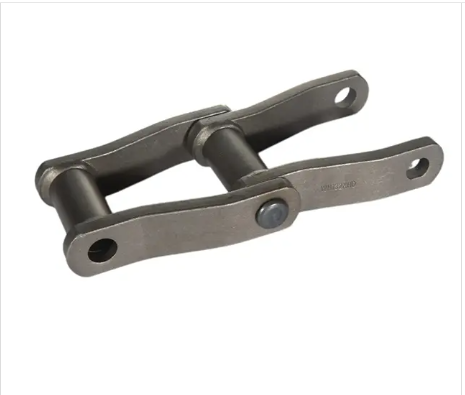










The WH78 chain, a critical component in industrial conveyor systems, is recognized for its robust construction and high load-bearing capacity. Understanding its typical weight is essential for engineers, procurement managers, and maintenance teams involved in designing or operating conveyor lines. This article explores the weight characteristics of the WH78 chain, examining its structural design, material composition, and real-world applications to provide a comprehensive overview.
Structural Design and Material Composition
The WH78 chain belongs to the category of welded steel mill chains, designed specifically for heavy-duty applications such as bulk material handling, scraper conveyors, and industrial machinery. Its structure typically includes welded links, sidebars, and pins, all crafted from high-strength alloy steel. The welded construction enhances durability, while the alloy steel composition ensures resistance to wear, corrosion, and impact.
Key dimensions influencing the weight of the WH78 chain include the pitch (distance between links), sidebar thickness, and pin diameter. For instance, some variants of the WH78 chain feature a pitch of 66.27 mm, with sidebars measuring approximately 31.75 mm in thickness and pins with a diameter of 12.7 mm. These dimensions contribute to the chain’s overall mass, which varies depending on the specific configuration and attachments.

Weight Specifications and Variations
The weight of the WH78 chain is typically expressed in kilograms per meter (kg/m) or pounds per foot (lb/ft). According to technical data from manufacturers, the weight of the WH78 chain ranges from approximately 5.9 kg/m to 7.1 kg/m, depending on the variant. For example:
A standard WH78 chain without additional attachments may weigh around 5.9 kg/m.
Variants with reinforced sidebars or specialized coatings, such as the WH78C (made of 35CrMo steel), may weigh up to 7.1 kg/m.
These weight variations stem from differences in material thickness, heat treatment processes, and the inclusion of attachments like scraper plates or cranked links. For instance, the WH78H variant, designed for high-temperature applications, may incorporate thicker sidebars or specialized alloys, increasing its weight further.
Factors Influencing Weight
Several factors contribute to the weight of the WH78 chain:
Material Grade: Higher-grade alloy steels, such as those containing chromium or molybdenum, increase the chain’s density and weight.
Link Geometry: The design of the links, including their width, height, and thickness, directly impacts the chain’s mass.
Attachments: Additional components like scraper plates, cranked links, or reinforced pins add to the overall weight.
Surface Treatment: Processes like polishing, galvanizing, or heat treatment may slightly alter the chain’s weight due to material deposition or structural changes.
Applications and Weight Considerations
The WH78 chain is widely used in industries requiring reliable material transport, such as cement production, sugar refining, and pulp and paper manufacturing. In these applications, the chain’s weight is a critical factor in determining conveyor efficiency, energy consumption, and maintenance requirements.
For example, in a cement plant, a WH78 chain weighing 6.4 kg/m may be used to drag heavy loads of clinker over long distances. The weight of the chain, combined with its tensile strength (typically around 150 kN), ensures durability under abrasive conditions. Conversely, in a lighter-duty application, such as a packaging conveyor, a variant with a reduced weight (e.g., 5.9 kg/m) might be preferred to minimize energy use and wear on components.
Conclusion
The typical weight of the WH78 chain ranges from approximately 5.9 kg/m to 7.1 kg/m, depending on its structural design, material composition, and attachments. This weight variability underscores the chain’s adaptability to diverse industrial needs, from heavy-duty drag conveyors to lighter material handling systems. Engineers and operators must carefully consider the chain’s weight when designing conveyor systems, as it directly impacts performance, energy efficiency, and long-term reliability. By selecting the appropriate WH78 chain variant, industries can optimize their operations while ensuring durability and safety.
In conclusion, the WH78 chain’s weight is a critical parameter that reflects its robust construction and versatility. Whether deployed in harsh industrial environments or lighter-duty applications, understanding its weight characteristics enables informed decision-making and ensures the efficient operation of conveyor systems. The WH78 chain remains a trusted choice for industries worldwide, balancing strength, durability, and adaptability to meet evolving operational demands.






